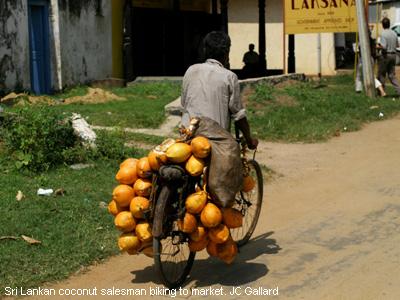
Millions of people in the tropics depend on coconuts for food, raw materials and livelihood. Coconuts are also a high value commercial crop. But like any crop, coconuts are at risk of drought and other prolonged events. By using climate science and better agricultural forecast models, the International Research Institute for Climate and Society (IRI) has helped increase the resilience of coconut plantations to climate variability in one of the world's major producers, Sri Lanka.
"Coconut cultivation sustains the livelihood of large numbers in the tropics and is the most important crop for food security after rice in Sri Lanka," says IRI scientist Lareef Zubair.

"Coconut is quite different from short-season cereal and pulse crops that we've worked with," says IRI research scientist James Hansen. "We initially thought our ability to forecast rainfall would be the most important factor in forecasting coconut yields months before harvest. Instead, we learned that the history of weather as far as two years before harvest provides quite a bit of information about future yields."
Simply by monitoring rainfall during a dry season, growers are able to predict future yields up to 15 months in advance with good skill. If there's too little rainfall, then they can make management decisions, such as irrigating or increasing fertilizer use, to try to mitigate the impacts on yield.
Read more at: Spotlight: Climate and Coconuts (30 March 2009)
How will climate change affect global food security? Join us in London in October to find out.
CABI global summit: food security in a climate of change, Royal Garden Hotel, London, UK, 19-21 October 2009.
